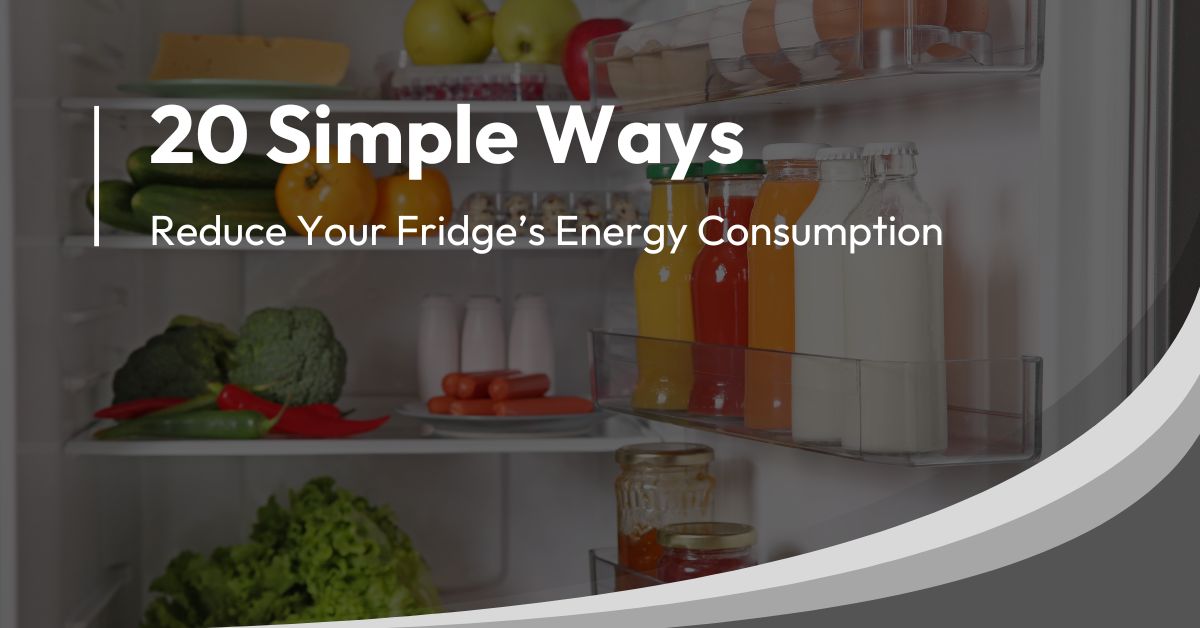Your refrigerator is one of the hardest working appliances in your home, operating 24/7 to keep your food fresh. However, this constant operation can lead to high energy consumption. Here are 20 simple ways to make your fridge more energy-efficient, saving you money and reducing your environmental impact.
1. Set the Right Temperature
- Keep your fridge between 37°F and 40°F (3°C to 4°C)
- Set your freezer to 0°F (-18°C)
2. Keep Your Fridge Full
- A full fridge retains cold better than an empty one
- Use water bottles to fill empty spaces if needed
3. Allow for Proper Ventilation
- Leave a few inches of space around your fridge for air circulation
- Clean the coils at the back or underneath every 6 months
4. Cool Food Before Refrigerating
- Let hot foods cool to room temperature before storing
- This prevents your fridge from working overtime to cool them down
5. Cover Foods and Liquids
- Uncovered foods release moisture, making the compressor work harder
- Use containers with lids or wrap foods in plastic
6. Check and Replace Door Seals
- Test seals by closing the door on a piece of paper
- If you can pull the paper out easily, it’s time to replace the seals
7. Minimize Door Opening Time
- Know what you want before opening the fridge
- Organize items for quick retrieval
8. Defrost Regularly
- For manual defrost fridges, defrost when ice buildup reaches 1/4 inch
- This improves efficiency and saves energy
9. Use the Power-Save Mode
- Many modern fridges have an energy-saving setting
- Activate this mode when you’re away for extended periods
10. Keep Your Fridge Level
- An unlevel fridge can affect door alignment and seal effectiveness
- Use a spirit level to check and adjust the feet if necessary
11. Avoid Placing Hot Appliances Nearby
- Keep your fridge away from the oven, dishwasher, or direct sunlight
- This prevents it from working harder to stay cool
12. Use Fridge/Freezer Thermometers
- Monitor the temperature to ensure it’s at the optimal setting
- Adjust as needed to prevent overcooling
13. Organize for Efficiency
- Place frequently used items in easy-to-reach spots
- This reduces the time the door stays open
14. Use the Fridge’s Features Properly
- Use crisper drawers for fruits and vegetables
- Adjust humidity settings as recommended for different produce
15. Plan Your Shopping
- Buy only what you need to avoid overloading your fridge
- This ensures good air circulation and reduces waste
16. Vacuum the Condenser Coils
- Clean coils help your fridge run more efficiently
- Vacuum them every 3-6 months
17. Keep the Top Clear
- Avoid storing items on top of your fridge
- This can block heat dissipation and make the fridge work harder
18. Consider Upgrading to an Energy Star Model
- If your fridge is over 10 years old, a new Energy Star model could significantly reduce energy consumption
19. Use Ice Trays Instead of an Automatic Ice Maker
- Automatic ice makers can increase energy use by 14-20%
- Manual ice trays are more energy-efficient
20. Perform Regular Maintenance
- Check and clean door gaskets
- Ensure drain holes are clear
- Keep the interior clean to prevent odors that may cause you to open the door more frequently
By implementing these simple tips, you can significantly reduce your refrigerator’s energy consumption. Not only will this save you money on your electricity bills, but it will also extend the life of your appliance and reduce your carbon footprint. Remember, small changes can lead to big savings over time!


 Understanding Energy Star Ratings: How to Choose an Efficient Fridge
Understanding Energy Star Ratings: How to Choose an Efficient Fridge
Leave a Reply